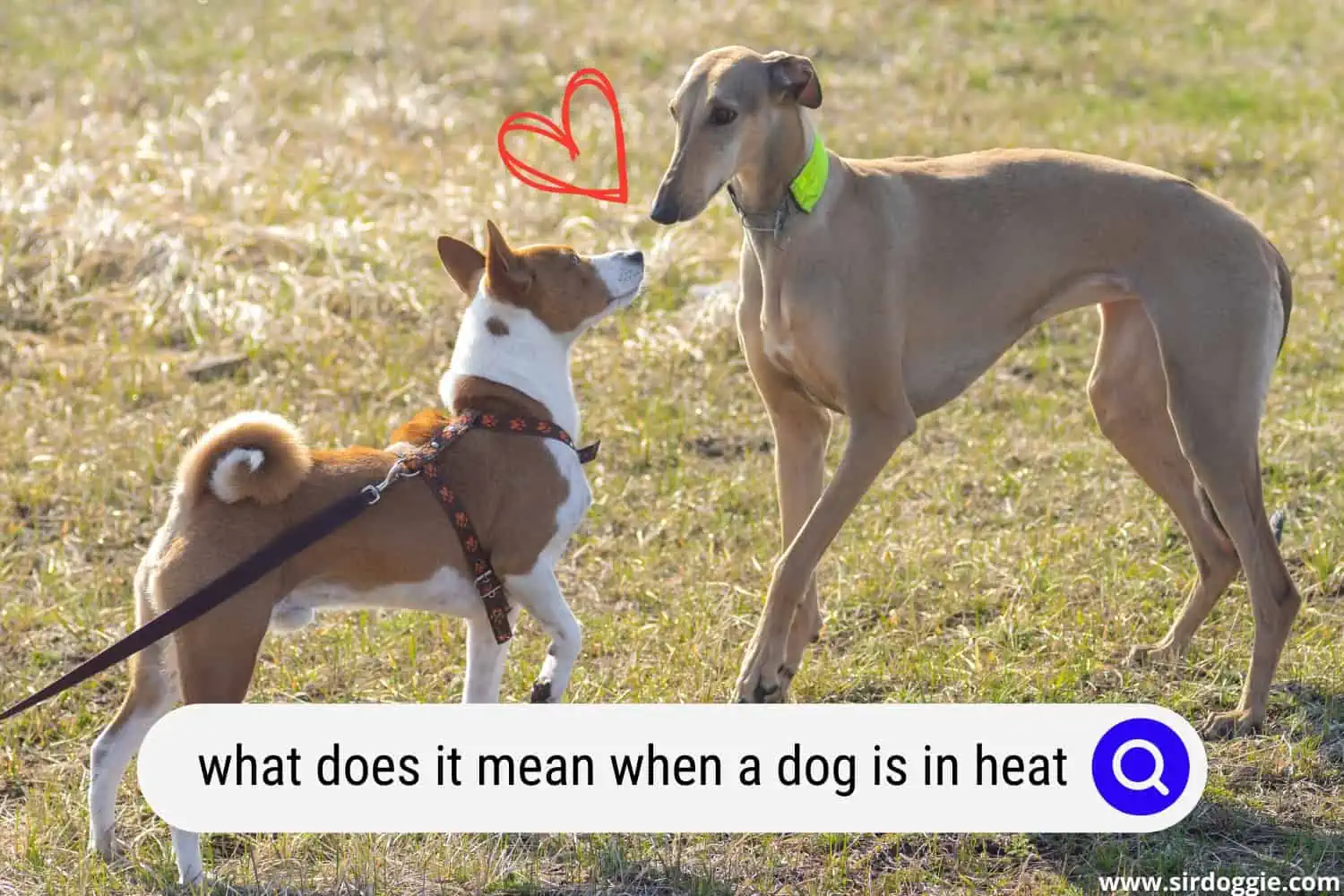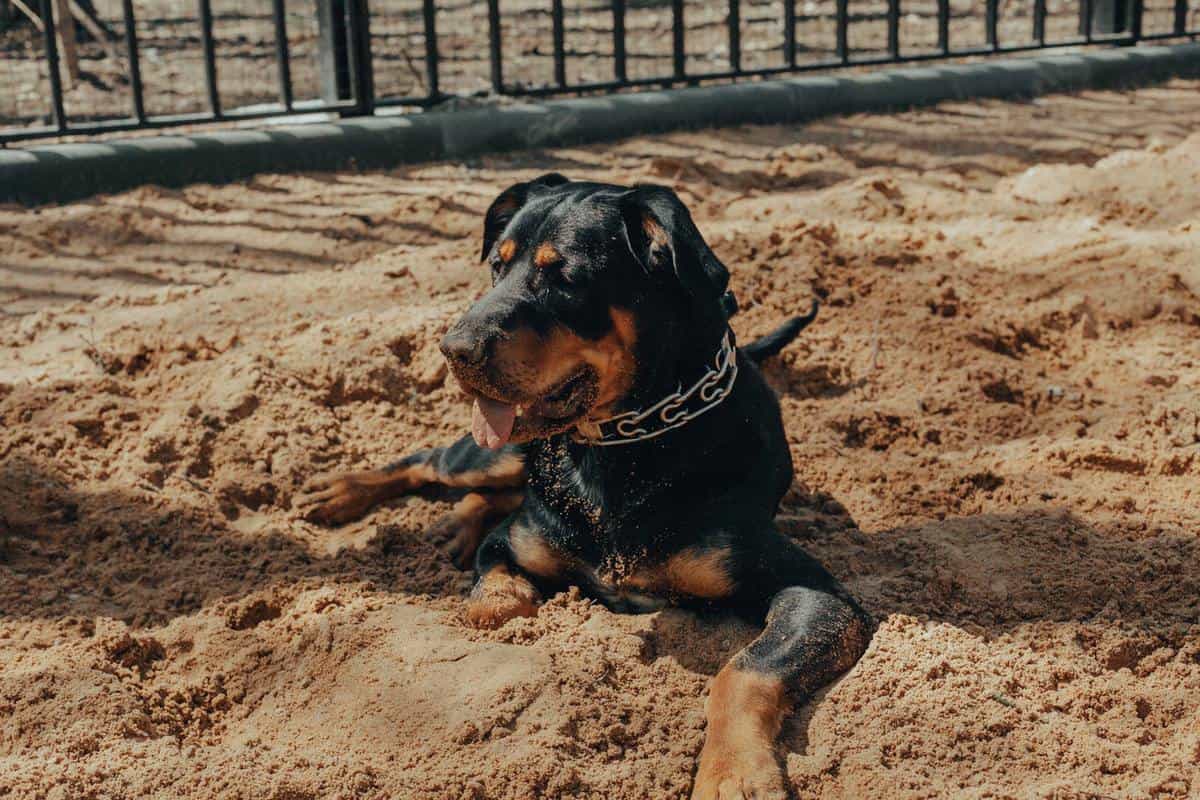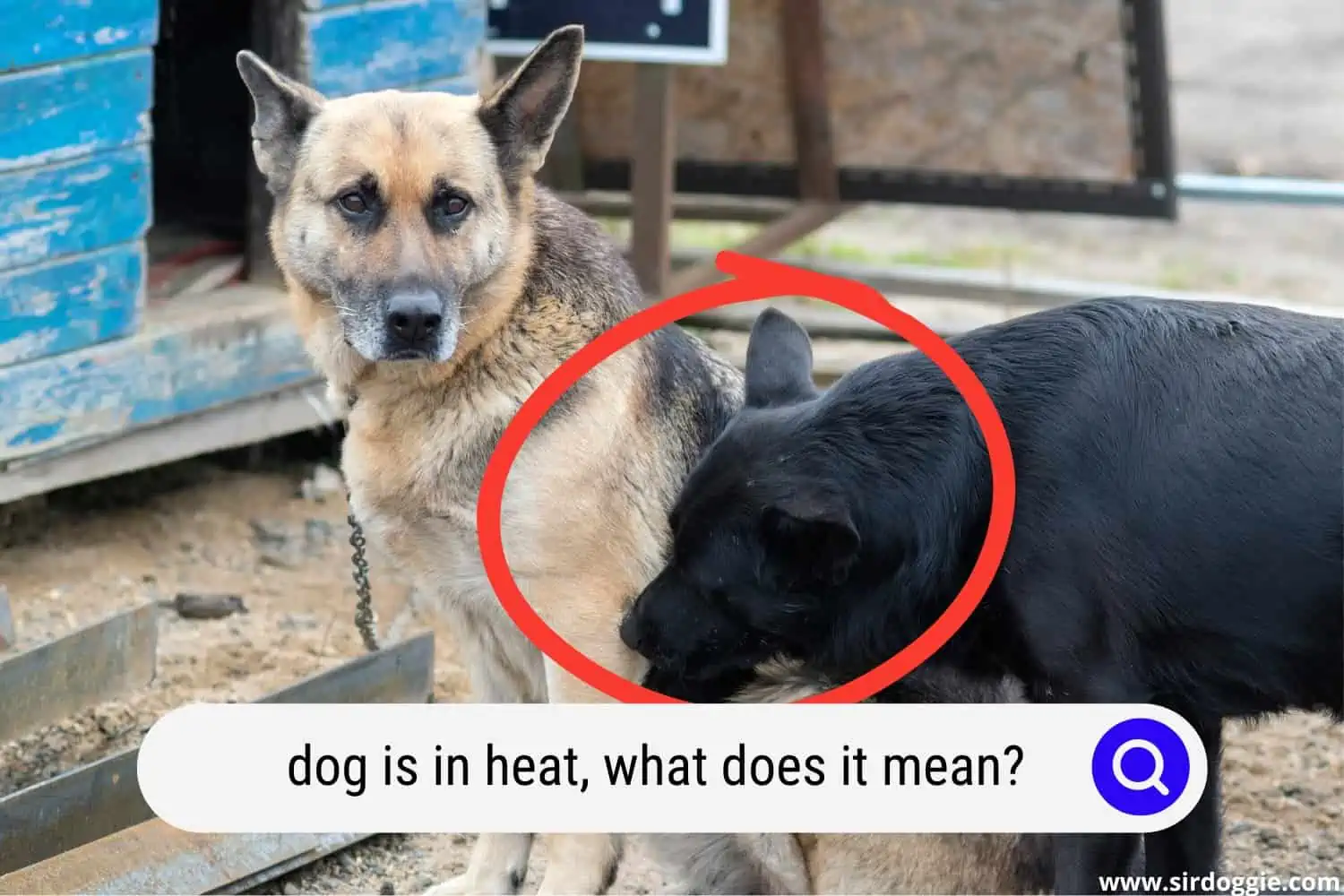What Does it Mean When a Dog is in Heat?
What does it mean when a dog is in heat? A female dog will experience estrus (heat) a couple of times a year. This is when she is fertile and becomes interested in breeding due to hormonal changes. She will have a spike in the hormone estrogen, which will then drop as her mature eggs drop into the uterus. It is only at this time that puppies are possible.

Coming home to a dog who is excited to see you, even if all you did was go out to the car to get something you forgot, can have both its good and bad sides. Dealing with a dog in estrus or in heat can be trying, or it can be nothing more than a momentary nuisance.
Knowing what estrus is may help you to understand your dog a bit better. Whether you want puppies or you want to know so you can keep your intact female from having them, knowing how to identify the estrus cycle can help in making these decisions.

Dogs in Heat – What it Is and What it Means
Being in heat means that your dog is either ready to breed or getting ready to. Most dogs will be in heat from two to four weeks, depending on the size and breed of your dog.
When your dog is in heat for the first time, this is a sign that she is sexually mature and capable of breeding. Though if you do plan to breed her, this is not the optimal time to do it.
Breeding at less than 18 months of age can be very hard on a dog and can even stunt her growth as she is still a growing puppy. A dog should NEVER be bred during her first heat, even accidentally.
Measures should be taken to ensure that she is not bred, and these are measures that any responsible pet owner should be able to take.
That being said, being in heat is actually just part of the estrus cycle that a female dog experiences most of her life. The roller coaster that is her hormone cycle will rise and fall just as they do in human females, just on a longer scale.
Heat Cycles In Dogs
Basically, the heat cycle, or estrus, is how the hormones rise and fall in a female dog. In humans, this roller coaster runs its loop about every 28 days, but with dogs, it can run anywhere from 3 – 6 months.
Dogs will typically have a heat cycle two to three times a year.
The entire heat cycle can last from 2-4 weeks, depending on the breed of your dog. Although the health and age of your dog can affect this as well. Smaller dogs will usually have heats more often while larger breeds may stick closer to the 6-month cycle.
There are 4 stages to the estrus cycle. I have listed them below and what you can expect during each stage.
Proestrus
This is the beginning of the cycle. This is marked by a swollen vulva (female genitalia) and one of the two physical signs of the heat cycle.
This is when males will start to show interest when her personality will start to change a bit, and when she will start playing more “sexual” games with others. Mounting and chasing behaviour will start to become more pronounced.
Your dog will also have some slight bleeding from her genitalia. This could be compared to a period in a human, but this is actually the beginning, not the end of the cycle, unlike humans.
This bleeding is the second physical sign of the estrous cycle and will taper off around 5-7 days.
Estrus
Your dog will continue to have a swollen vulva, and the discharge will be lighter, eventually becoming more clear although it is not urine. This is when males could become aggressive to try to mate with her.
I have even heard of male dogs trying to break into homes to get to a female in heat.
Your female will usually be more willing to “play” with unknown males and will be more likely to let a known male mount her. However, if she absolutely hates a particular male, even though the hormones will push her breeding instinct, she may not let him mount her.
You may notice some changes in her personality at this point as well, but this varies on the personality of your dog.
This part of the heat cycle will usually last about 5-7 days. You will know if she is receptive to males by scratching above her tail. If she moves her tail to the side, she may be receptive to males.
Do NOT let her go outside unsupervised. Untethered males will jump fences, dig under them, and do anything they need to get at a receptive female, including attacking humans.
Diestrus
This is the period after her heat and will last the length of a typical dog pregnancy (about 54-60 days). Whether she gets pregnant or not, this will still last about two months. Unlike with humans, pregnancy does not interrupt the estrus cycle. The discharge will end, and the swelling of her vulva will return to normal.
Your dog’s personality will return to normal, and the males will no longer be hounding your dog. Some dogs may experience pseudopregnancy during this time.
This is a false pregnancy, and while it is not usually anything to worry about if you are concerned, you can see your vet about it.
She may have lactation and my mommy any stuffed animals she has access to. While this is not typical, it is normal. If your girl has packmates, she may protect her “puppies” from them which may result in some arguments between them, especially if one of the stuffed animals is a favourite of a packmate.
Anestrus
This is basically a lack of hormonal activity. Play will go back to normal. Your dog will no longer be protecting her stuffed animals as the hormones responsible for pseudopregnancy are no longer existent.
If she was pregnant, she would be caring for puppies for about half of this time. This time can last from about 30 to 90 days.
Should You Get Your Dog Fixed to Prevent Heat
This is a personal choice and a decision that should not be made lightly one way or the other. There are both pros and cons to getting a dog fixed. Getting a dog fixed will NOT prevent all reproductive cancer, even though some vets and even the ASPCA will claim it does.
According to a study done by University of California Davis, getting a dog fixed can potentially increase risks of some joint disorders and other types of cancer than the ones that spaying may prevent.
While the study does specify that differences between breeds and the general dog population differ, it does make one reconsider previous recommendations made.
One thing I did find in all of my research is that regardless of whether you plan to have your dog fixed, waiting until after the first heat is best. Fixing a female before she is sexually mature can seriously increase bone issues as they get older. This is due to the hormones signaling bone growth to slow or even stop never getting released.
One of the other main things to consider is the risks associated with spaying. Other than the obvious slight risk of death, either from a doctor’s mistake or more likely a reaction to the anesthesia, there is also a risk of incontinence as well.
The advantages of spaying should also be considered, such as the mating drive would no longer exist, nor would the risk of unwanted puppies.
Due to the absolutely horrendous amounts of stray and homeless dogs, getting a female fixed may be a choice that is best for your family, if you cannot care for a litter of puppies throughout their lifetime.

Final Notes
Some pet parents become worried if their dog’s nipples are still swollen after being in heat. Although it’s more common for a female dog’s nipples to not be swollen after their heat cycle, it can occur and, for the most part, it is nothing to worry about.
One reason for nipple’s still being swollen is due to “phantom pregnancy”. This means your dog is showing signs of being pregnant, even though she is, in fact, not pregnant. A phantom pregnancy will usually resolve itself within a few weeks after the heat cycle has ended.

Family Dog Expert Author
Hi there! I’m Stuart, a devoted dog lover and family dog expert with over a decade of experience working with our furry companions. My passion for dogs drives me to share my knowledge and expertise, helping families build strong, loving bonds with their four-legged friends. When I’m not writing for SirDoggie, you’ll find me hiking, playing with my beautiful dog, or studying music.